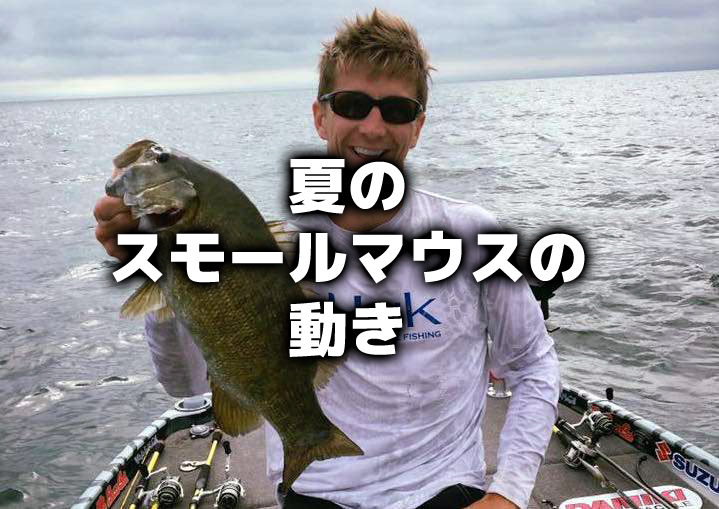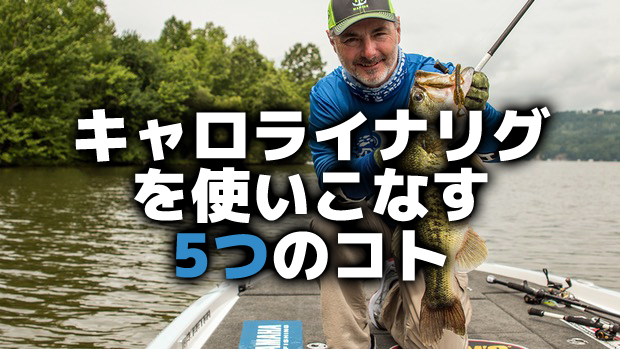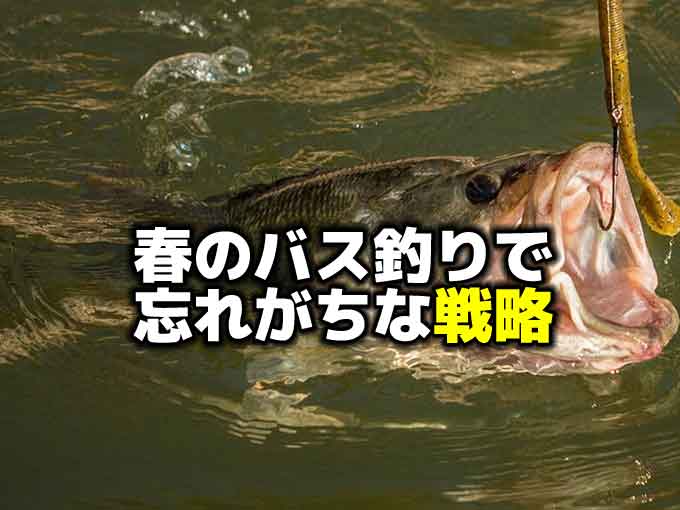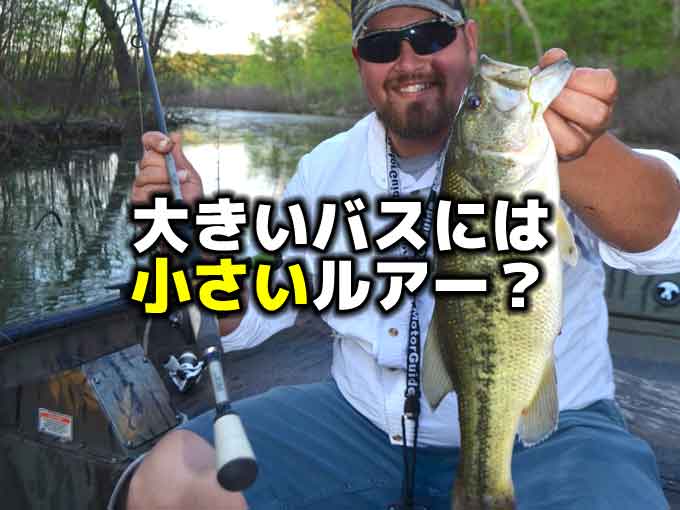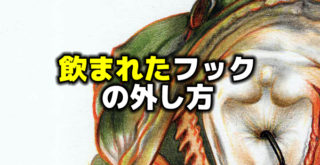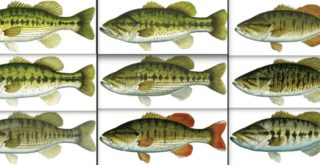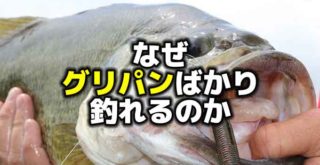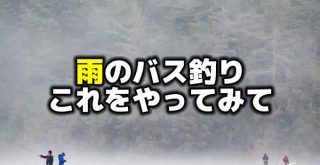春のバス釣りに2つのリグ:ダウンショット&スプリットショット

Photo by GAME & FISH.com
こんにちは!店長の小山です!
本日は海外サイトより、”Get the Drop on Springtime Bass”という記事を引用してご紹介いたします。
引用先:gameandfishmag.com ”Get the Drop on Springtime Bass”by Bill Schaefer – April 25, 2019
ダウンショットリグとスプリットショットリグ、皆さんは使われることがありますでしょうか。
どちらもよく釣れるリグとして有名ではあるのですが、どちらも全盛期は過ぎてしまったかな、という感じがします。全盛期が過ぎたと言っても、定番化されているので悪い意味ではありません。
基本的にはどちらもライトリグですので、一部の方からは”セコ釣りだ”なんて言われてしまうことがあります。こういう言葉を当てはめられてしまうと、どうも使いづらくなってしまう側面がありますよね。
裏を返せば、それくらい釣れるということなんですよね。もちろん使うことは自由ですし、セコ釣りだと言うことも自由です。
そしてどちらのリグも、アメリカや日本のトーナメントでのウイニングパターンになることがあるリグであることも忘れてはいけませんよね。
しかしそんな釣れ線リグでも、万能ではありません。どんなものでもそうですが、適材適所という言葉がある通り、使い方や使うシチュエーションを間違えるとトーナメントに勝つどころか、1日やってバイトもないなんてこともあるはずです。
しっかり効率よく使いたいものですよね。
この記事は、アメリカのハンティングとゲームフィッシングの専門メディア「GAME&FISH」の記事で、特に春のバスに対して有効となるこのダウンショットリグとスプリットショットリグの使い方を解説してくれています。
そういえば最近その2つのリグは使ってないな、という方はぜひ、おさらいの意味で読んでみてはいかがでしょうか。
ダウンショットリグ
The drop-shot rig is just that — a hook tied to the main line several inches above a split shot squeezed onto the end of the main line. This hook of the rig is usually tied onto the main line with a Palomar knot, with the tag end left at various lengths for attaching the split shot. As the craze grew, a lot of tackle companies jumped on the bandwagon and made special drop-shot hooks and drop-shot weights, but there’s no real reason to get that fancy. Keeping it simple can catch more bass. This is a rig that can be more versatile than you might think.
In many cases, the lakes where we bass fish have a ton of vegetation that produces a lot of muck that settles on the bottom. Perhaps, your bass lake just has a lot of slimy algae on its bottom. In any case, all bass fishermen have had their Texas-rigged worm come back with a pile of green slime on it because the weight at the nose of the worm scoops up the slime, algae and other detritus on the lake bottom where it is fished.
The drop-shot rig presents your bait — typically a soft-plastic worm, grub or fluke — above the bottom because only the weight affixed to the end of the mainline contacts the lake bottom. Without the weight right at the bait, the bait stays clean.
When rigging the bait, the tag end to the weight is usually 10 to 12 inches long most of the time, but it can be lengthened if the weeds are taller or the bottom vegetation is extra thick.
When fishing around rock, the drop-shot rig can be tweaked to adapt to those treacherous bottoms that seem to eat Texas-rigged plastic worms. When fishing a drop-shot rig around rock, go a little shorter on the tag end of the line off the hook and a little lighter with your weight. I mentioned specialized drop-shot weights, but you can just add a regular split shot to the bottom of the tag end.
Squeeze it on, just tight enough to hold it in place. If the split shot gets caught in the rocks, apply some extra pressure to pull the line through the split shot, and all you have to do is add another weight if you miss a fish. No retying every cast.
If you do get stuck in the rocks, let the drop-shot bait sit a bit, occasionally giving it an ever so slight twitch. If you do get bit, you need to set the hook hard and fast.
You want to pull the rig away from the jammed shot, while setting the hook in the fish. If you wait too long, the fish feels the resistance of the lure because the shot is stuck in the rocks and it drops the bait.
A lot of anglers think of the drop-shot rig as a tactic for fishing deep water, but it can be used in water from 6 inches to 60-plus-feet deep. Springtime fishing for bass, as they roam the banks looking for bedding locations, can produce fast action.
For this activity, many anglers choose to fish small creature baits or shad-type baits. Bass love crawdads, as we know, and this rig lets the lures, whether a French fry or soft-plastic crawdad or shad lure, swim or scoot a bit more than just get dragged along the bottom. You might want to go with a longer 14- to 16-inch tag end for this tactic, creating a more natural movement of the bait.
ダウンショットリグと呼ばれる理由 – メインラインの先端にスプリットショットシンカーを付け、その数センチ上にフックが結ばれています。このリグのフックは通常、パロマーノットでメインラインに結び、リーダーの長さはスプリットショット(ガン玉シンカー)を取り付ける位置によりさまざまな長さにすることができます。ダウンショットリグのブームが来たとき、数々のタックルメーカーがこぞってダウンショット専用フックやシンカーを製造販売しましたが、考えなしで使うわけにはいきません。これはシンプルに考えることでよりバスをキャッチしやすくなります。そしてこれは思った以上に用途の広いリグです。
多くの場合、私たちがバスを釣る湖には多くのウィードがあり、ボトムには泥がたまっていたりします。そしておそらく、トロロ藻のようなものがある湖もあるはずです。いずれにせよ、テキサスリグでボトムを釣っていると湖底のトロロ藻やヘドロなどがシンカーについたドロドロの状態で帰ってくることが多いものです。
ダウンショットリグなら、メインラインの先端に固定されたシンカーだけがボトムに接触するため、ワームはボトムの上にあります。シンカーがワームについていないため、きれいな状態をキープできます。
ワームを付けるとき、たいていの場合、リーダーの長さは25〜30センチですが、ウィードの高さが高い場合やウィードベッドが非常に濃い場合は長くすることができます。
岩の周りで釣りをするとき、テキサスリグでは根掛かりしてしまいそうなときでもダウンショットリグはそれに対応して調整することができます。ダウンショットリグで岩の周りを釣るときは、リーダーの長さを少し短くして、シンカーを軽くしてください。ダウンショット専用シンカーがあると言いましたが、スプリットショット(ガン玉)をリーダー先端に付けるのでも大丈夫です。
シンカーの位置を決めたら、しっかりと挟んできつく固定します。スプリットショットシンカーが岩に引っかかったら、シンカーが付いているラインを引っ張るわけですから、いつもより強めの力で挟み込みます。もし取れてしまったらまたシンカーを付けなければなりません。キャストするたびにシンカーを付け直したくないですからね。
岩場で根掛かりしてしまった場合は、ダウンショットリグのワームをそのまま放置してみて、時々わずかにトゥイッチしてみましょう。それでバイトがあったら、素早く強めにフッキングする必要があります。
フッキングの動作をすると同時に根掛かりしたシンカーを外したいというわけです。ここで長い時間待ってしまうと、シンカーが根掛かりしているため魚が違和感を感じワームを吐き出してしまいます。
多くの釣り人は、ダウンショットリグをディープ用のテクニックと考えていますが、水深15センチから18メートルまで使用することができます。春バスを釣ろうとしたとき、バスはネストを作ろうとしてバンク沿いをウロウロしますので、動きが早いことがあります。
この行動があるために、多くの釣り人は小さめのクリーチャー系ワームやミノー系ワームで釣ることを選びます。ご存知の通り、バスはザリガニを好みますが、このリグは、フレンチフライでもクロー系ワームでもミノー系ワームでも問わず、ボトムをズル引きしても泳いだり、浮いている状態です。このテクニックではリーダーをもっと長めの35~40センチで使うと、よりナチュラルなワームのアクションになるでしょう。
スプリットショットリグ
The split-shot rig serves a similar purpose as the drop-shot rig — to let the bait swim more naturally. This scaled-down version of the classic Carolina rig was most likely developed in Southern California by anglers trying to get a new twist on presenting their tiny finesse baits to the ever-so-wary bass there. Again, the presentation of smaller baits, matching the baitfish in the lakes, is what led this method to catch on quickly among tournament pros and anglers everywhere.
The split-shot rig is usually fished on spinning gear with lines commonly lighter than those used on baitcasting reels. The line usually is tied directly to the hook and a split shot is pinched to the line about 12 to 14 inches ahead of the hook. The split shot can get larger with depth, but some anglers copied the Carolina rig with a small worm weight in front of the split shot. The clicking can help attract the bass at times. Some fishermen even add a glass bead between the weights for more clicking, like the sound a crawdad might make.
The split-shot rig really lets the bait swim along, a lot more than even the drop-shot rig. Leaders can vary from a few inches to a couple feet, depending on the bait. As with the drop-shot rig, almost anything can be fished on this rig. Small, soft-plastic shad baits have been the norm for years as they float behind the weight looking like a lone shad that lost the rest of the school. Small creature baits, crawdads and French fry baits will also dance and scoot along more naturally.
The deeper you fish the split-shot rig, the heavier the weight needs to be. You can go larger with the baits, too. Even if it’s just a 4- to 6-inch worm, try a floating worm if the fish are a little off the bottom. The split-shot rig is, admittedly, a rig that can be a little hard to pull through brush and rock, but heavier cover simply calls for the leader to be shortened. Almost any soft-plastic bait can be added.
スプリットショットリグはダウンショットリグと同様の目的を果たします – ワームをより自然に泳がせるという意味です。キャロライナリグの縮小版ともいえるこのリグは、確か南カリフォルニアで開発されたもので、非常にスレたバスに小さく繊細なワームでアプローチしようと考えたアングラーによって開発されたものです。湖のベイトフィッシュにマッチさせた小さなワームでのアプローチは、世界中のプロトーナメンターやアングラーたちの間で瞬く間に広がりました。
スプリットショットリグは通常、ベイトタックルではなくより細いラインを使うスピニングタックルで釣ります。ラインはフックに直接結び、スプリットショットシンカーはフックの約30〜35センチほど前でラインに挟みこみます。スプリットショットシンカーはディープで使うにつれて大きくしていきますが、一部のアングラーの間ではスプリットショットリグにキャロライナリグの要素を取り入れました。カチカチという音はバスの興味を引くのに役立ちます。スプリットショットリグでもカチカチ音を出すために、シンカーの間にガラスビーズを入れる人がいるのです。
スプリットショットリグは、ダウンショットリグよりもワームをスイミングしやすくなります。リーダーはワームに応じて数センチから数十センチまで変えることができます。ダウンショットリグと同様に、このリグであればほぼどんなワームでも使うことができますが、小さいミノー系ワームはシンカーの後ろで群れからはぐれた孤独な小魚のように見えるため、長年にわたって一般的に使われてきました。もちろん小さめのクリーチャー系ワーム、クロー系、フレンチフライのようなワームもまた、よりナチュラルに舞い、泳ぎます。
スプリットショットリグでディープを釣るには、シンカーを重くしますが、ワームでできることもあります。たとえば4〜6インチのワームの場合、魚がボトムから少し浮いている場合はフローティングワームを試してください。スプリットショットリグは確かに、オダや岩をスリ抜けにくいところがありますが、ヘビーカバーには単にリーダーを短くすることで対応できます。これでほとんどすべてのワームを使うことができます。
おまけのヒント
When fishing the shallows, brush or small trees can sometimes choke the water column. You can easily pull drop-shot and split-shot baits through structure like that if you shorten up the tag line to the weight.
As you fish deeper, maybe looking for those big girls waiting out on outside points or river channels, you can always go to a larger lure, upward of 12 inches and more. Choose a hook that better fits your larger lure and a weight for reaching — and maintaining — the depth at hand. Remember, the main purpose of the drop-shot and split-shot rigs is to let the bait float above the bottom, creating a more realistic presentation to the bass. Some pros even add a floating shad crankbait to the back of a split-shot rig.
There are a number of ways to fish these setups and do it well. Add these and you will be catching more bass at your local lake on the drop-shot and split-shot setups.
シャローを釣るとき、水中のオダや小さな木に引っ掛かってしまうことがあります。 リーダーを短くすると、ダウンショットリグやスプリットショットリグでもそのようなストラクチャーで簡単に使うことができます。
よりディープで釣るとき、たとえば岬の外側やリバーチャンネルで大きなメスバスを狙うような場合、12インチ以上のビッグワームを試してみることです。 より大きなワームに合ったフックと、そのレンジに達する、またキープできるシンカーを選択してください。 覚えておいてください、ダウンショットリグとスプリットショットリグの主な目的はワームがボトムより上に浮かぶようにすることであり、バスへよりリアルな表現をすることです。 スプリットショットリグの後ろにフローティングのシャッドプラグを付けるプロもいます。
このように、より良く釣りをするための方法がいくつかあります。 こういったことを追加することで、ダウンショットとスプリットショットリグを使って、ホームレイクでより多くのバスをキャッチすることができるはずです。
ダウンショットもスプリットショットも、共通して言えるのは、リグが絡みやすい、キャストしづらいということがありますよね。
ダウンショットはロッドとガイドに通っているラインの間なんかに絡まりやすかったり、スプリットショットはいつの間にかシンカーにラインがなぜか1周余計に巻きついていたりしますよね。
また、ふたつともワームとシンカーが離れているので、ロングキャストには向いていないと言えます。
そんな欠点があってなお、トーナメントのウイニングパターンともなりえる威力を持つわけですから、嫌いなリグであったとしてもマスターしておきたいものですね。
スモールマウス用のリグとしても有名ですし、野尻湖ではスプリットショットリグをよく使うロコアングラーさんも意外と多いようです。軽いワームでこそ生きるリグなんですかね。
この春、どちらかのリグで一発大物を狙ってみるのもいいのではないでしょうか。
それではまた。
毎度ありがとうございます!








